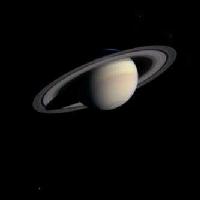The next celestial event is one that is recommended to take a look at in the days before and after, starting on Saturday night 25/06/2005 and ending on Monday 27/06/2005 the planets Venus, Saturn and Hama will be in "grouping"
Amir Bar-Net, Yigal Fattal

The next celestial event is one that is recommended to take a look at in the days before and after, starting Saturday evening 25/06/2005 and ending on Monday 27/06/2005 the planets Venus, Saturn and Hama will be in a "grouping" (Saturn will join on Monday) but the really beautiful thing It is precisely that if we add and watch the event also in the days after that, we can be impressed by the rapid movement of Hema - the planet closest to the Sun, the coffee ("year" in Hema) ends in only 88 earth days, so it can be seen for a few weeks at each appearance. On those dates Hema will reach its greatest visible distance from the Sun and two weeks later it will not be visible. If we compare this to the much slower movement of Saturn we can get an impression of the difference between an inner planet (Hama and Venus) and an outer planet (Saturn). Venus is behaving strangely at all.
Unlike the heat that is in a hurry to set and Saturn that leaves us after a long and impressive appearance, due to the movement of the Earth and Venus around the Sun it will remain above the horizon in the hour after sunset for the next few months. To an observer equipped with a telescope, the change in its appearance will be revealed - Venus will change its shape from a ball to a sickle like the moon.
When making observations with the naked eye the difference between stars and planets is that the planets "travel" between the stars. In fact, with the exception of Mercury, Venus, Mars, Jupiter and Saturn, all the other "stars" are real stars - suns like our sun. Some are tens of thousands bigger than her, others are smaller, some are older than her and there are stars that are only a few million years old. But like our sun they shine, while the planets only reflect light from the sun. There is no need for this information to "bother" those who observe justice in the eye just like that. Jupiter's position just below Gamma Virgo (the third brightest star in the constellation Virgo) makes it easy to follow its movement, east and west and east again. What is called "last movement" is a situation where the planets suddenly change the direction of their movement between the stars for a while and then "wake up" and go back to the normal direction. Using simple field binoculars it will even be possible to see the moons of Jupiter in their journey around it.
And adds Yigal Fatal, chairman of the Israeli Astronomical Society and director of the astronomy forum on YNET: "On Friday, June 24, there will be three planets - Mercury, Venus and Saturn, in one line. The distance between the northern planet Mercury and the southern Saturn will be about 3 degrees of arc, when Venus is between them. (The degree of arc is the viewing angle at which we see a certain body. For example, the angular size of the full moon in the sky is about half the degree of the arc. Hence, the angular distance between the planet Mercury and Saturn will be equivalent to the angular size of 6 full moons). The three planets will be in Gemini at the time of the conjunction, with Venus being the middle and brightest of the three. "
In fact, Venus is so bright that it can be seen during the day and in the evening it shines like a lantern above the western horizon. The three planets will be in the west direction, with the bright Venus being a sort of landmark. Two more stars will be found from the north and will complete one line with the three planets - these are Castor (the northern one of the years) and Pollux, both stars of the Gemini group and named after the two twin brothers, brothers of the beautiful Helen of Troy.
Since these are planets, this will be an excellent opportunity to notice their movement across the sky. The next day, Shabbat evening, the three planets will move east and the distance between them will decrease to only two degrees of arc. Venus, as you remember, is the brightest of the three, Mercury is the second brightest and Saturn is the least luminous of the three.
Mercury, the closest of all the planets to the sun, moves at the greatest speed. Venus, the second farthest from the Sun, moves at a slower speed than the planet Mercury but still faster than the distant Saturn. Therefore, the two planets will move away from Saturn and on Sunday evening, they will begin a dance of mutual clustering with each other. On Sunday, the distance between them will be a quarter of a degree of arc, half the angular size of the full moon and the peak will be on Monday evening, when their angular distance from each other will be only 3 minutes of arc (a minute of arc is the 60th part of a degree of arc).
This distance is so small that it will be very difficult to separate the two planets with the eye and they will appear as one star. A look through small binoculars or a telescope will show both planets in the same field of view. The next day, Tuesday, the 28th of the month, the star Mercury will continue its course in the sky and open a gap that will grow and grow.
